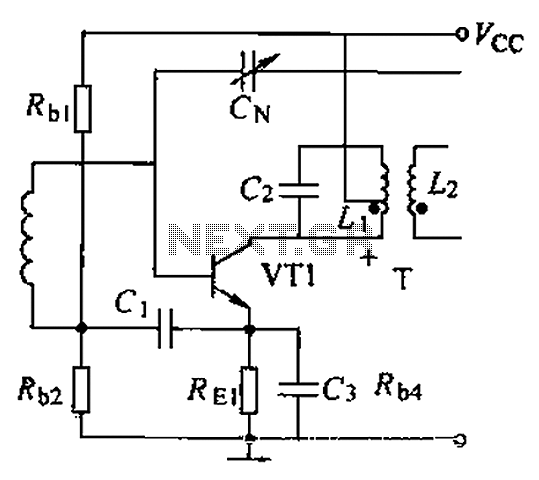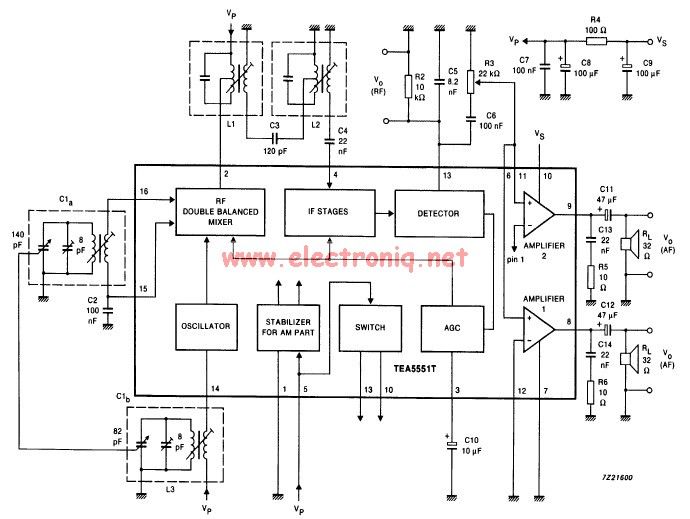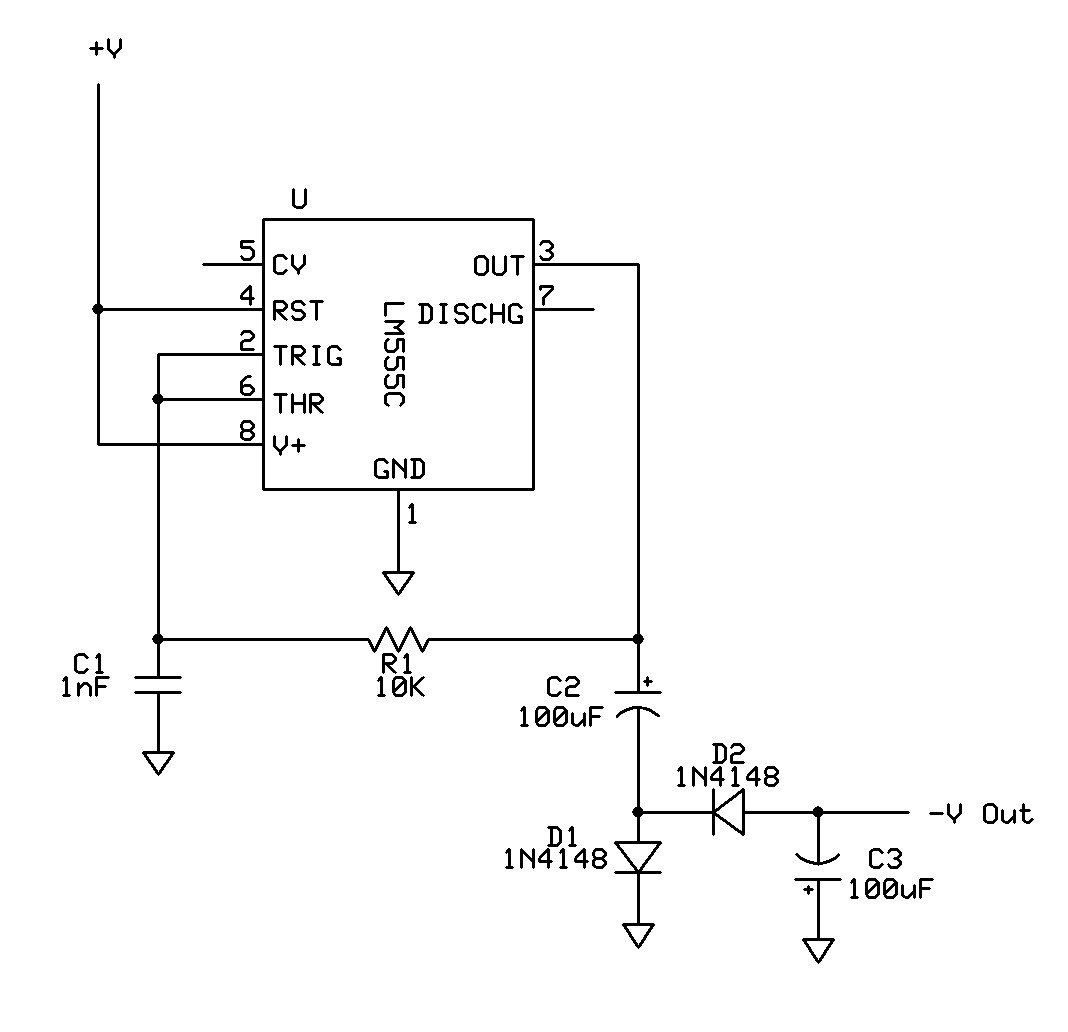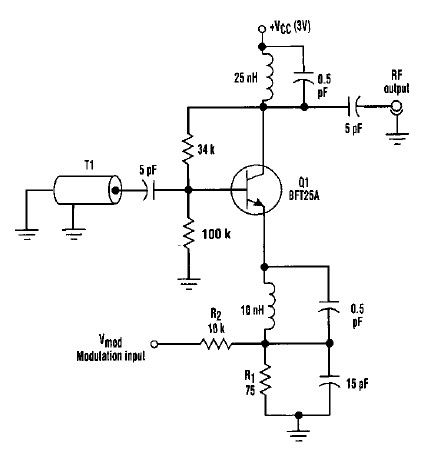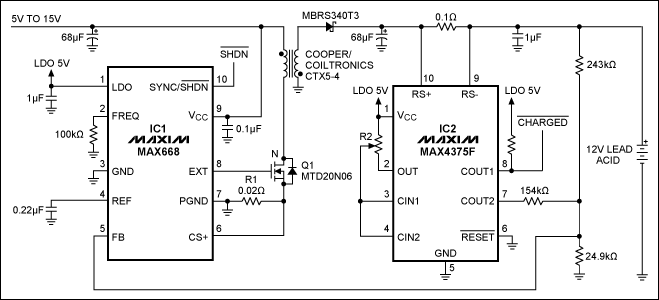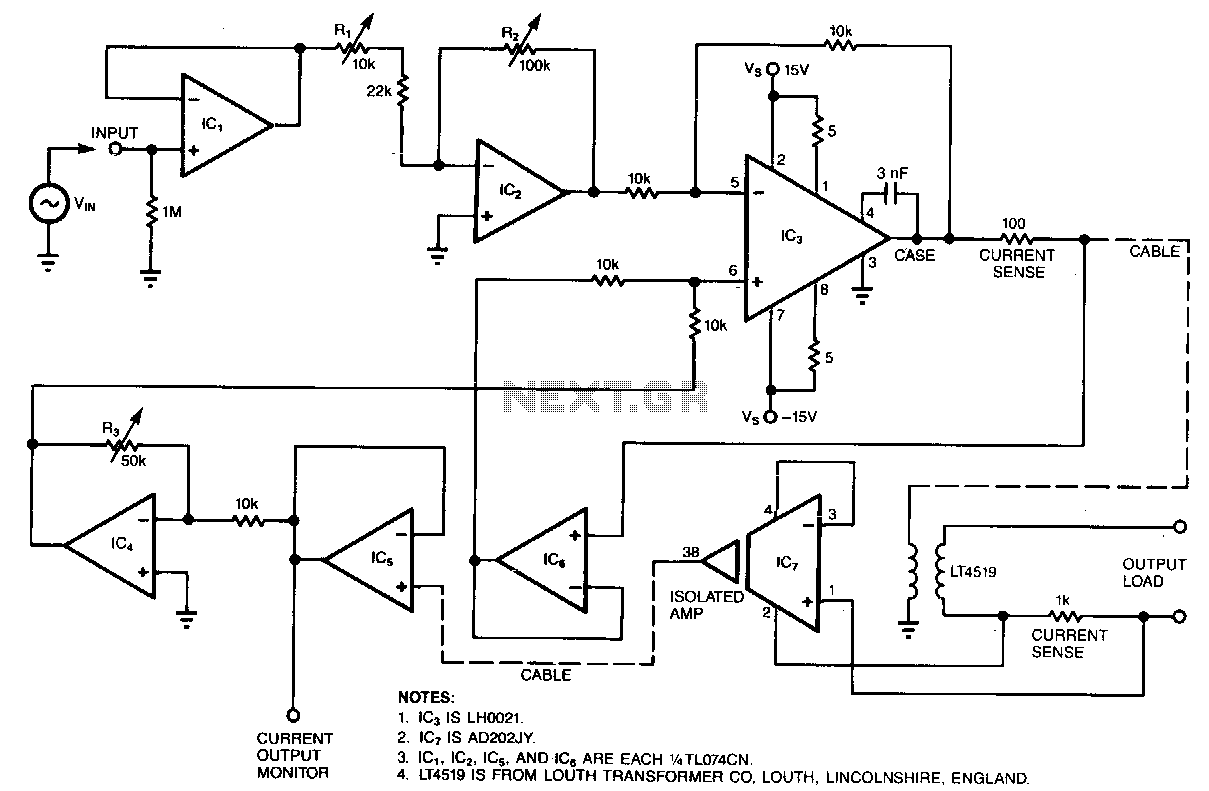
Constant Temperature Circuit
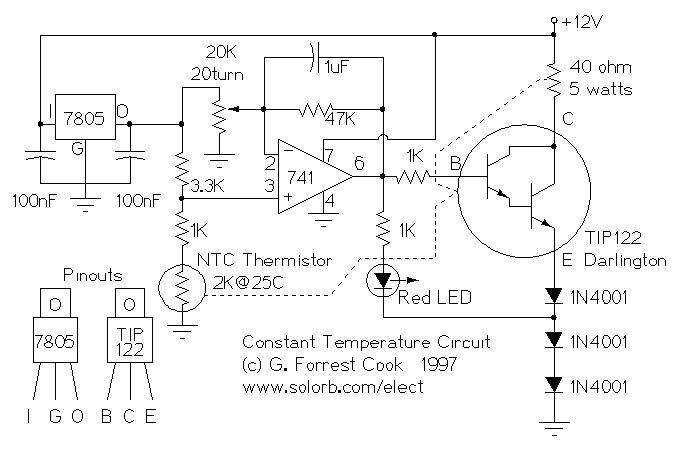
Constant Temperature Circuit. G. Forrest Cook 1997. Introduction: This circuit is a generic low-power temperature controller that can be used for stabilizing temperature.
The constant temperature circuit described is designed to maintain a stable temperature in various applications, utilizing low power consumption to enhance efficiency. The primary components of this circuit typically include a temperature sensor, such as a thermistor or thermocouple, an operational amplifier (op-amp), and a control element like a relay or a transistor to regulate heating or cooling devices.
In operation, the temperature sensor continuously monitors the ambient temperature and sends a voltage signal to the op-amp. The op-amp compares this signal against a predefined reference voltage that corresponds to the desired setpoint temperature. When the sensed temperature deviates from the setpoint, the op-amp's output changes, triggering the control element to activate or deactivate the heating or cooling mechanism.
To improve stability and response time, feedback mechanisms can be incorporated, allowing for adjustments based on the rate of temperature change. Additionally, hysteresis may be applied to prevent rapid switching of the control element, which can lead to wear and tear or inefficiencies.
The circuit can be tailored for specific applications by selecting appropriate components and tuning parameters such as gain, setpoint, and response time. This versatility makes it suitable for use in various fields, including HVAC systems, laboratory equipment, and industrial processes where precise temperature control is essential.Constant Temperature Circuit. (C) G. Forrest Cook 1997 Introduction This circuit is a generic low power temperature controller that can be used for stabilizing temperature. 🔗 External reference
The constant temperature circuit described is designed to maintain a stable temperature in various applications, utilizing low power consumption to enhance efficiency. The primary components of this circuit typically include a temperature sensor, such as a thermistor or thermocouple, an operational amplifier (op-amp), and a control element like a relay or a transistor to regulate heating or cooling devices.
In operation, the temperature sensor continuously monitors the ambient temperature and sends a voltage signal to the op-amp. The op-amp compares this signal against a predefined reference voltage that corresponds to the desired setpoint temperature. When the sensed temperature deviates from the setpoint, the op-amp's output changes, triggering the control element to activate or deactivate the heating or cooling mechanism.
To improve stability and response time, feedback mechanisms can be incorporated, allowing for adjustments based on the rate of temperature change. Additionally, hysteresis may be applied to prevent rapid switching of the control element, which can lead to wear and tear or inefficiencies.
The circuit can be tailored for specific applications by selecting appropriate components and tuning parameters such as gain, setpoint, and response time. This versatility makes it suitable for use in various fields, including HVAC systems, laboratory equipment, and industrial processes where precise temperature control is essential.Constant Temperature Circuit. (C) G. Forrest Cook 1997 Introduction This circuit is a generic low power temperature controller that can be used for stabilizing temperature. 🔗 External reference
Warning: include(partials/cookie-banner.php): Failed to open stream: Permission denied in /var/www/html/nextgr/view-circuit.php on line 713
Warning: include(): Failed opening 'partials/cookie-banner.php' for inclusion (include_path='.:/usr/share/php') in /var/www/html/nextgr/view-circuit.php on line 713
